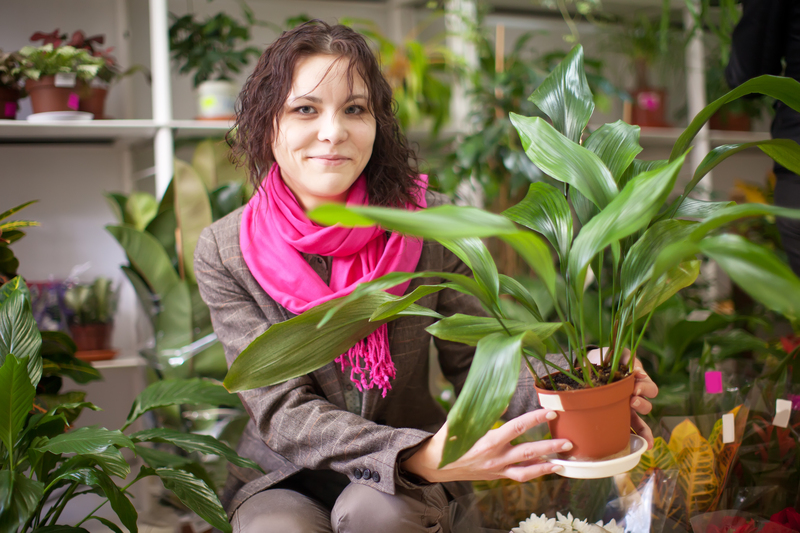Sowing Seeds of Change: How Gardening Impacts Climate
Posted on 16/09/2025
Sowing Seeds of Change: How Gardening Impacts Climate
Gardening is more than just a relaxing hobby--it holds profound potential for combating climate change. As environmental concerns grow globally, everyday individuals are seeking ways to make a positive impact. One of the most accessible and effective ways to contribute is through cultivating gardens of any size, from a windowsill herb box to a sprawling backyard oasis. Gardening for climate action isn't just about beautifying your space; it's about sowing seeds of change, literally and metaphorically. In this comprehensive guide, you'll discover how gardening impacts climate, why it matters, and how you can start making a difference today.
Understanding the Connection: Gardening and Climate Change
The intricate link between gardening and the climate lies in how our gardens can influence atmospheric carbon, biodiversity, water cycles, and microclimates. By leveraging the power of soil, plants, and ecological balance, every gardener can become an agent of environmental change. Let's delve deeper into how tending to your patch of earth can help heal our planet.
Carbon Sequestration: Gardens as Earth's Lungs
Plants absorb carbon dioxide (CO2) during photosynthesis, storing it in their roots, stems, and leaves. This natural process is known as carbon sequestration and is critical in offsetting greenhouse gas emissions.
- Trees and Shrubs: Established gardens with mature trees and shrubs are incredibly effective at trapping CO2 over long periods.
- Soil Health: Healthy garden soil, especially when enriched with compost and organic matter, can store significant amounts of carbon underground.
- Native Plants: Planting indigenous species often results in better carbon capture due to their deep root systems.
According to the United States Department of Agriculture (USDA), a single mature tree can absorb up to 48 pounds of CO2 annually. When millions of home gardens join this effort, the long-term impact on climate mitigation becomes substantial.
Reducing Urban Heat with Green Spaces
Urban areas are susceptible to the "heat island effect," where buildings and roads absorb and re-radiate heat. Climate-friendly gardening helps to counteract this phenomenon by:
- Shading Surfaces: Trees, vines, and lush gardens prevent excessive heat absorption by blocking sunlight from rooftops and pavements.
- Evapotranspiration: Plants cool the air around them by releasing water vapor--a process that can lower local temperatures significantly.
- Green Roofs and Walls: Covered with vegetation, these innovations not only insulate buildings but also offer cooling benefits.
On a hot summer day, the temperature of a fully vegetated garden can be up to 5-10?F cooler than surrounding paved or barren areas. This not only enhances comfort but also reduces reliance on air conditioning, thus saving energy and lowering emissions.

Gardening for Biodiversity and Ecosystem Health
A garden is more than just a collection of plants--it's a lifeline for countless creatures. By supporting biodiversity, gardeners foster resilient ecosystems that can better withstand climatic changes.
Pollinators: Nature's Gardeners
Bees, butterflies, and birds are vital to healthy gardens. By planting a mix of flowering species and avoiding pesticides, gardeners protect these indispensable pollinators:
- Native and Heirloom Varieties: These provide diverse and nutritious food sources for local wildlife.
- Continuous Bloom: Planting species that flower in succession ensures year-round food for pollinators.
- Shelter and Water: Simple additions like birdhouses and small ponds support animal populations critical for ecological balance.
Healthy pollinator populations boost plant resilience and productivity, helping gardens capture more carbon, enrich the soil, and moderate the local climate.
Enhancing Soil Health: A Carbon Sink
Soil is one of the planet's largest carbon stores. Regenerative gardening techniques like composting, mulching, and reduced tilling protect and build strong, living soil.
- Compost: Diverts organic waste from landfills and turns it into rich humus that locks carbon underground.
- Mulch: Mulching prevents soil erosion, reduces watering needs, and feeds beneficial soil microbes.
- No-dig Gardening: Limits soil disruption and helps soil organisms flourish, creating a thriving underground ecosystem that stores more carbon.
These practices not only increase carbon sequestration but also improve plant health and resilience, making gardens better equipped to weather the effects of climate change.
Reducing Environmental Impact Through Sustainable Gardening
Gardening reduces your carbon footprint in various ways, especially when you incorporate eco-friendly habits into your routine. Here's how climate-impact gardening takes action on a personal and community level:
Grow Your Own Food: A Sustainable Choice
Locally grown food slashes emissions by minimizing the need for transportation, packaging, and storage. Every tomato, lettuce head, or herb you grow at home displaces produce that would otherwise travel hundreds--or thousands--of miles. Some ways in which food gardening addresses climate concerns:
- Reduces Food Miles: Growing and picking from your own garden is the shortest supply chain possible.
- Decreases Waste: Home gardeners typically only harvest what they need, cutting down on spoilage and packaging waste.
- Encourages Organic Practices: When you control your garden, you can avoid synthetic fertilizers and pesticides that contribute to greenhouse gases and water pollution.
Community gardens multiply these benefits, bringing fresh, local food to neighborhoods and fostering collective action for a brighter, more sustainable future.
Water Conservation: Smart Irrigation and Plant Selection
Water scarcity is exacerbated by climate change in many regions. Climate-conscious gardening uses mindful watering and drought-tolerant plants to conserve this precious resource.
- Drip Irrigation: Delivers water directly to the roots for maximum efficiency and minimal evaporation.
- Rainwater Harvesting: Collecting and using rainwater for irrigation cuts reliance on municipal sources.
- Native and Drought-Resistant Plants: Adapted to local rainfall, these plants require less supplemental water.
With thoughtful planning, your garden not only absorbs carbon but also becomes a model for waterwise living in a changing climate.
Garden Design for Climate Adaptation and Mitigation
A strategic garden layout can amplify your positive impact on the environment. Consider these climate-smart design ideas:
- Planting Windbreaks: Rows of shrubs or trees can block cold winds in winter and cool breezes in summer, reducing home heating and cooling needs.
- Edible Landscaping: Blending food crops with ornamental plants for both beauty and bounty reduces demand for monocultures.
- Rain Gardens: Designed to capture and filter runoff, these features protect waterways, recharge groundwater, and boost garden biodiversity.
Green spaces in urban and suburban settings have the power to fight air pollution, manage stormwater, and restore lost habitats--no matter how small your plot may be.
Steps to Start Your Climate-Positive Garden
Ready to make an environmental impact from your backyard or balcony? Here's a quick roadmap:
- Assess Your Space: Consider sunlight, soil quality, and available water. Work with what you have and start small if necessary.
- Plan for Diversity: Select a variety of native plants, pollinator-friendly flowers, and food crops suited to your climate.
- Build Healthy Soil: Begin composting kitchen scraps and yard waste. Use mulch and avoid chemicals whenever possible.
- Conserve Resources: Set up rain barrels or drip irrigation. Group plants with similar needs together for efficiency.
- Engage the Community: Join or start a local garden group to share knowledge, tools, and seeds. Collective impact matters!
Every step you take is a valuable investment in the climate and in the community. Your personal garden can inspire others, setting off a ripple effect of positive change across neighborhoods and cities.
Challenges and Solutions in Gardening for Climate Impact
While the benefits are compelling, climate-smart gardening does bring challenges such as changing weather patterns, pests, and limited space in urban areas. Here's how to address them:
- Weather Resilience: Select hardy, adaptable plants and provide shade or windbreaks for sensitive varieties.
- Integrated Pest Management (IPM): Encourage natural pest predators and rotate crops to minimize pest outbreaks without chemicals.
- Container Gardening: For limited space, use pots or vertical gardens. Rooftops, balconies, and windowsills can all become green sanctuaries.
- Education and Outreach: Community workshops and online resources can help new gardeners develop climate-positive skills.
Collaborative approaches are key: engage with local gardening initiatives, share seeds, troubleshoot together, and advocate for supportive city policies such as composting and green spaces.

Gardening as a Movement for Climate Solutions
The ripple effects of gardening extend well beyond your own plot. Urban gardening projects, school gardens, and rewilding efforts are reshaping communities, providing food security, greening public spaces, and inspiring environmental stewardship in the next generation.
Championing Policy Change and Green Infrastructure
As more citizens embrace gardening for the climate, momentum grows for government investment in green infrastructure. Public policies can multiply individual actions, investing in:
- Urban Forestry: City trees to shade streets and purify air
- Pollinator Pathways: Corridors of habitat across cities or regions
- Food Forests and Community Gardens: Shared spaces that educate, feed, and unite neighborhoods
Advocacy starts at home, but together we can shift landscapes at city, regional, and national scales.
Conclusion: Planting the Future--One Garden at a Time
The hopeful truth is this: in the face of daunting environmental challenges, you can make a powerful difference. Sowing the seeds of change through climate-conscious gardening helps sequester carbon, cool urban environments, support biodiversity, and foster resilient communities.
Whether nurturing native wildflowers, tending a vegetable patch, or participating in a community project, your actions cultivate a healthier planet. Your garden isn't just a refuge for you--it's a force for climate solutions, a classroom for future stewards, and a living testament to the power of simple choices.
Let's sow the seeds of change together--one plant, one patch, one powerful impact at a time.

